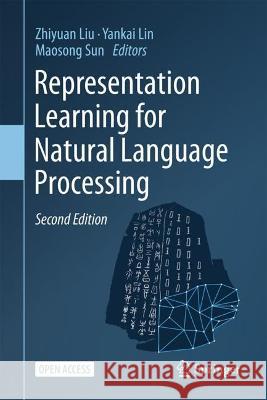Representation Learning for Natural Language Processing » książka
topmenu
Representation Learning for Natural Language Processing
ISBN-13: 9789819916023 / Angielski
Representation Learning for Natural Language Processing
ISBN-13: 9789819916023 / Angielski
cena 161,36
(netto: 153,68 VAT: 5%)
Najniższa cena z 30 dni: 154,18
(netto: 153,68 VAT: 5%)
Najniższa cena z 30 dni: 154,18
Termin realizacji zamówienia:
ok. 22 dni roboczych
Dostawa w 2026 r.
ok. 22 dni roboczych
Dostawa w 2026 r.
Darmowa dostawa!
Kategorie:
Kategorie BISAC:
Wydawca:
Springer
Język:
Angielski
ISBN-13:
9789819916023











